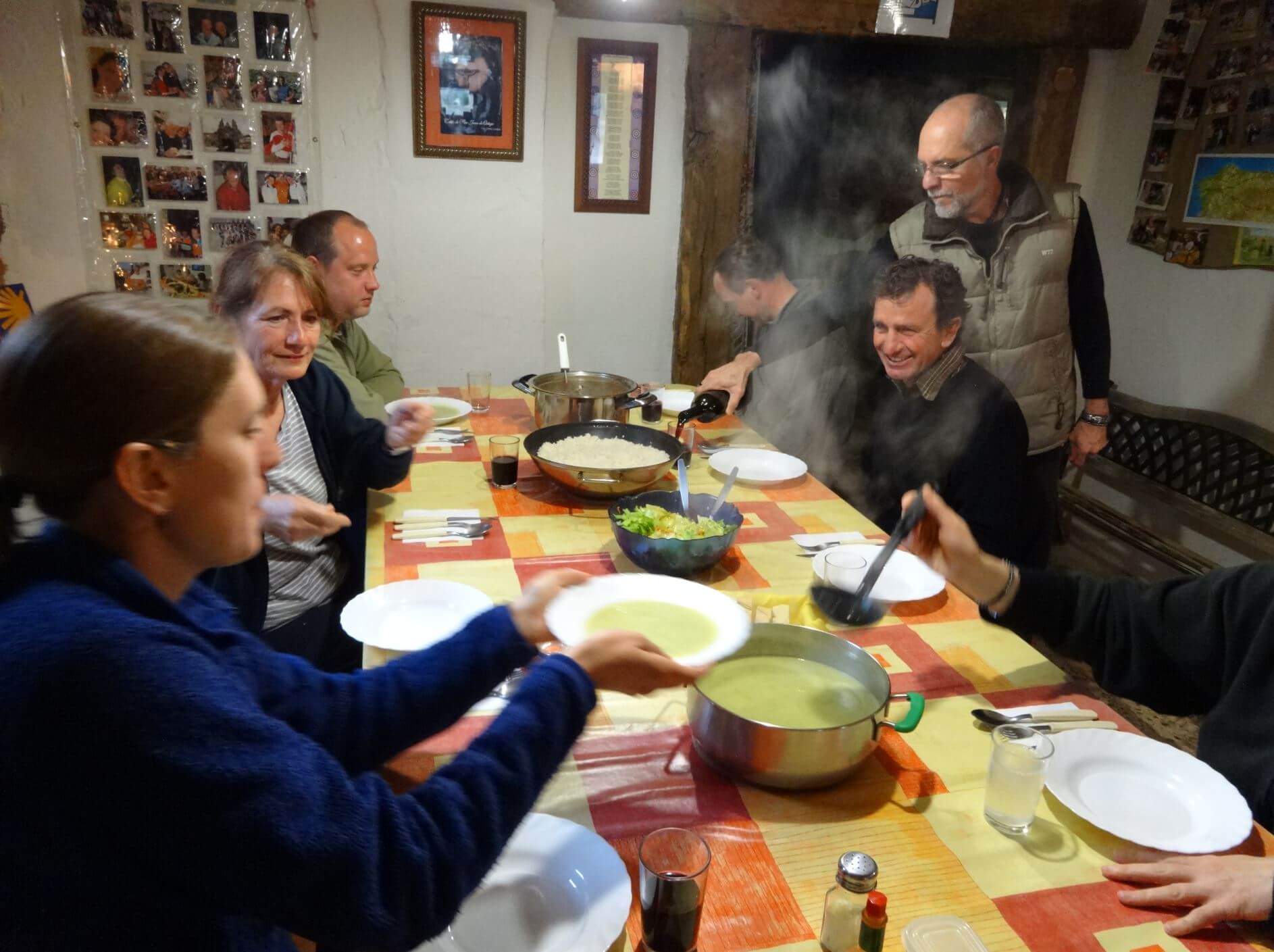There are different ways to do your Camino and I recommend choosing the style that best suits you. This is YOUR camino so do it the way that meets your needs. Which Camino best suits you? Swap between them as you wish. Each style has it’s own merits and advantages, and a few cons.
1. True Pilgrimage
his is usually done for religious purposes, or people who enjoy challenging themselves to do it the hard way. Head off on the Camino on your own and follow the Pilgrim Rules. You must carry your pack, sleep in albergues, never catch a taxi/bus/train.
Pros –
- you’ll meet lots of pilgrims and share some great experiences, particularly over dinner
- costs will be low, as albergues and pilgrim meals are quite cheap
- you’ll have a great sense of freedom, able to stop wherever you want each night
- you’ll feel like you accomplished your religious goals when you arrive in Santiago.
Cons –
- you will be sharing rooms, showers, dinner tables with strangers (some of whom you may not like)
- your chances of getting tendonitis increase when you carry your bag (particularly if you over-pack)
- you may get swept up in the Pilgrim Culture, taking on an air of superiority (keep in mind you’re just a tourist, like everyone else)
- other pilgrims will look down their noses at you if you break the Pilgrim Rules
- you’ll possibly feel guilty or like a failure if you break the rules.
2. Slackpack the Camino
Head off a Camino adventure on your own and do it YOUR way. Sleep in an albergue, sleep in a five star hotel. Walk or jump in a taxi or train for a leg. Keep in mind that the Camino doesn’t have to be done all in one go, choose the sections you want to do. What is slackpacking? Find out here.
Pros –
- a huge sense of freedom
- flexibility to stay where you like with any level of comfort (albergue to luxury), and you can mix it up as much as you wish
- ability to spend alone time to collect your thoughts, lay naked on your bed
- private bathroom which is clean and doesn’t have people hanging around forcing you to have a quick shower (and watch you as you dress)
- an adventure that specifically meets YOUR needs.
Cons –
- you are unlikely to build the strongest connections with a lot of other pilgrims (but don’t worry, you’ll still make plenty of friends)
- some valuable information can be heard at the table each night in an albergue – you’ll miss some of this (but most of it is online or discussed along the path anyway)
- if you’re transferring your bags by car, you do need to spend a little bit of time each afternoon pre-booking accommodation/baggage transfer for the next day
3. Do a self-guided tour
Book a tour that makes all arrangements for you – flights, transport to your starting point (usually set in stages), accommodation and baggage transfers. They then give you instructions so each morning you just get up and go.
Pros –
- save lots of time in the planning phase
- completely relax knowing that everything has been taken care of
- you’ll receive handy information about each step along the way.
Cons –
- depending on where you stay, you may not build the strongest connections with a lot of other pilgrims (but you’ll make friends on the path)
- the itinerary is set, and it is likely to be rigid if dealing with a larger tour company, deviating from the path to explore something that piques your interest may not be possible.
- there is a cost involved for someone else to do the planning and bookings for you.
4. Do a guided tour
As per a self-guided tour above, but have a guide to show you the way and inform you of the history of each area. You can have the tour tailored to meet your needs. Do you want luxury, staying in former palaces and visiting wineries? Do you want an authentic experience, staying in albergues with a guide leading the way? Do you want to go middle of the road, staying in comfortable pensiones with private bathrooms?
Pros –
- save lots of time in the planning phase
- completely relax knowing everything has been taken care of
- you’ll be able to receive information at any point along the way
- you’ll always have someone else to handle any changes or hiccups and a point of contact in the case of an emergency.
Cons –
- the cost will be much more than going it alone or self-guided
- you won’t be the boss. You’ll always be checking in with someone, following their instructions and abiding by their itinerary. This is moreso with the bigger companies, but note that a private guide can build an itinerary tailored to your interests and will be more flexible if you wish to make a change.


